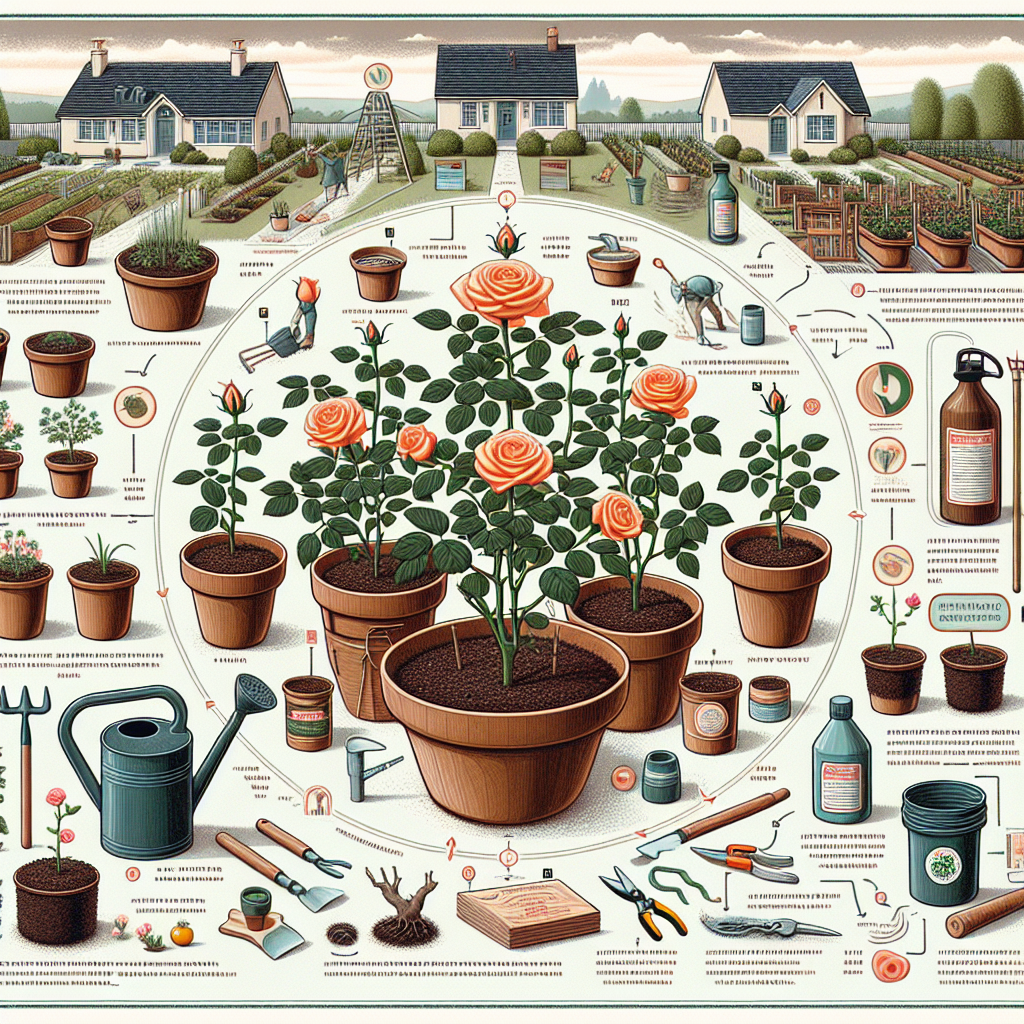
How to care for rose plants in pots
How to Care for Rose Plants in Pots: A Complete Guide
Roses are often considered the quintessential garden flower, captivating hearts with their beauty and fragrance. While many people envision sprawling rose bushes in their gardens, potting roses offers an attractive and space-efficient alternative. Growing rose plants in pots allows for greater accessibility, flexibility, and the ability to control conditions more easily. In this comprehensive guide, we’ll cover everything you need to know about caring for rose plants in pots, from selecting the right pot to addressing common pests and diseases.
Choosing the Right Pot for Your Roses
The first step in caring for your potted rose plants is selecting the appropriate pot. Pot choice can significantly impact your roses' health and growth.
- Size: Choose a pot that is at least 12-16 inches in diameter. This provides sufficient space for roots to grow.
- Material: Terracotta pots are excellent for temperature regulation, while plastic pots retain moisture better. Consider your climate when choosing.
- Drainage: Ensure the pot has adequate drainage holes to prevent waterlogging, which can lead to root rot.
Soil Selection and Preparation
The soil you choose for your potted roses is essential for their growth and development. You should aim to use a well-draining potting mix specifically formulated for roses or flowering plants.
- Organic matter: Amend the soil with compost or well-rotted manure to provide nutrients.
- Drainage materials: Mix perlite or sand into the potting mix to improve drainage.
- pH Level: Roses prefer slightly acidic soil (pH 6.0 to 6.8). You can test the pH and amend accordingly.
Watering Your Potted Roses
Watering is crucial for the health of rose plants. Overwatering or underwatering can lead to stress and diseases.
Tips for Proper Watering
- Frequency: Water your roses deeply once a week, adjusting based on climate and season.
- Timing: Early morning is the best time to water to allow leaves to dry and prevent fungal issues.
- Check moisture: Insert your finger about an inch into the soil; if it feels dry, it’s time to water.
Fertilizing Your Rose Plants
Fertilization is essential for robust growth and vibrant blooms. Proper nutrition will help your roses thrive throughout the growing season.
Types of Fertilizer
- Granular Fertilizer: Use a slow-release fertilizer specifically made for roses in spring and follow up with additional applications in summer.
- Liquid Fertilizer: In mid-summer, liquid fertilizers can be applied every four to six weeks.
- Organic Options: Fish emulsion or compost tea can be beneficial for organic gardening.
Sunlight Requirements
Roses are sun-loving plants that thrive in bright conditions. However, when they are in pots, it’s crucial to understand their specific sunlight needs.
Optimal Sun Exposure
Most rose plants require at least 6-8 hours of direct sunlight daily. Ensure they are placed in a location where they can soak up plenty of sun. However, during extremely hot summers, provide some afternoon shade to protect them from scorching.
Pruning Rose Plants in Pots
Regular pruning is vital for healthy rose plants, as it encourages growth and blooming. Understanding a few basic techniques can make this process more manageable.
When and How to Prune
- Timing: Late winter or early spring, just before new growth begins, is the best time to prune.
- Technique: Use clean, sharp pruners to remove dead or diseased wood, as well as to shape and maintain the plant.
- Height: Trim back to approximately one-third of the plant's height to stimulate new growth.
Dealing with Pests and Diseases
Like any garden plant, potted roses can suffer from pests and diseases. Being proactive can save your plants from serious damage.
Common Pests
- Aphids: Small, soft-bodied insects that suck plant fluids. Use insecticidal soap or neem oil for control.
- Spider mites: These tiny pests create webbing on leaves. Regular misting can help keep their numbers down.
- Black spot: A fungal disease that causes dark spots on leaves. Ensure good air circulation and remove affected foliage.
Winter Care for Potted Roses
When winter arrives, special care is necessary to protect your potted roses. They can be more vulnerable to freezing temperatures when in pots.
Winter Protection Tips
- Insulate Pots: Wrap pots in burlap or bubble wrap to protect roots from freezing.
- Keep them sheltered: Move pots to a more sheltered location, such as a garage or shed, during extreme cold spells.
- Monitor moisture: Even in winter, potted plants can dry out. Check soil moisture regularly and water carefully.
Conclusion
Knowing how to care for rose plants in pots is key to enjoying beautiful blooms and healthy foliage. From selecting the right pot and soil to understanding watering and fertilization needs, providing proper care ensures that your potted roses flourish. Utilize the tips outlined above to cultivate stunning rose plants that will provide beauty and joy throughout your home and garden. Happy gardening!
By Guest, Published on October 2nd, 2024